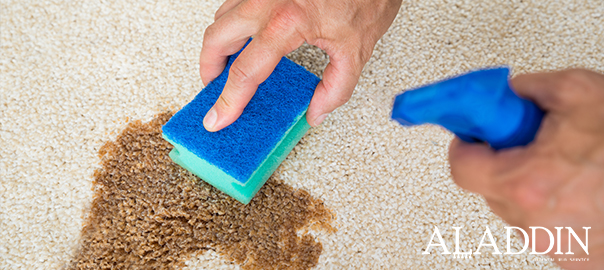Beet stains are some of the worst carpet or rug stains out there, with a surprisingly difficult to remove stain made of natural organic pigments. In fact, beets have been used as a textile dye for centuries for these exact reasons! Here’s a guide to removing beet stains from rugs and carpets for all those horseradish fans out there, as prepared by the expert carpet and rug stain removal experts here at Aladdin Oriental Rug.
Removing Beetroot Stains from Carpets and Rugs
First off, GENTLY dab the stain with a dry cloth to remove any excess liquid. Then:
- Place a clean sponge in cold water. Hold it against the stain, then blot it with a clean dry cloth. Repeat this process.
- Stubborn stains may require an additional step of sponging and blotting with a mixture of two tablespoons of dishwashing detergent and two cups of water.
- Another possible beetroot stain removal measure is to soak a slice of white bread in cold water, and placing it over the stain. Give the stain time to fully absorb into the bread, and then, gently and carefully, lift up the slice of bread.
Careful Things to Remember About Beetroot Stain Removal
-
Stains are more likely to be removed when dealt with as soon as possible.
-
Unless the stain is fat based (beetroot stains are NOT,) cold water is best for rinsing rather than hot water, which can set the stain in.
-
Before using any cleaning solution on your carpet or rug, test it in a corner of the rug where it’s likely not to be seen to ensure it won’t damage the material.
-
Always rinse out one type of cleaning solution before attempting to use another to remove a stain, as certain chemicals, when mixed, can cause other forms of damage or staining.
-
Don’t rub the fibers of your rug or carpet harshly, as you may damage them or impact the stain in more severely.
-
Make sure that towels or cloths that you use for blotting are white and totally clean.


